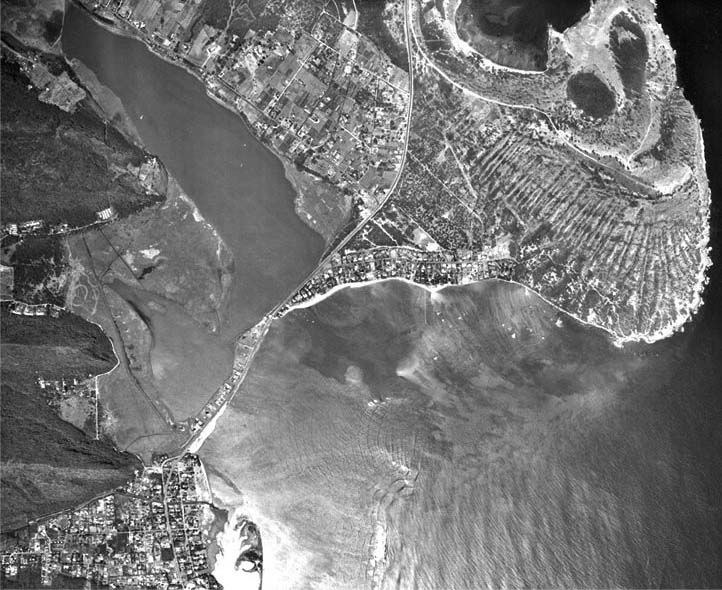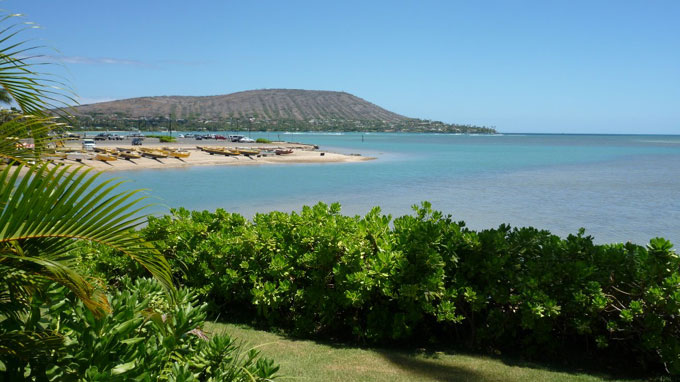In 1768, when Captain James Cook set sail on the first of three voyages to the South Seas, he carried with him secret orders from the British Admiralty to seek ‘a Continent or Land of great extent’ and to take possession of that country ‘in the Name of the King of Great Britain’.
While each of the three journeys made by Captain Cook into the Pacific had its own aim and yielded its own discoveries, it was this confidential agenda that would transform the way Europeans viewed the Pacific Ocean and its lands. (State Library, New South Wales)
Endeavour voyaged to the South Pacific, mainly to record the transit of Venus in Tahiti in 1769. After that, the ship sailed around the South Pacific searching for the “Great Southern Land.” (Wall Street Journal)
After heading west from England, rounding Cape Horn beneath South America and crossing the Pacific, Cook landed the Endeavour in Australia’s Botany Bay on April 29, 1770. To the British, Cook went down in history as the man who ‘discovered’ Australia – despite Aboriginal Australians having lived there for 50,000 years and the Dutch traversing its shores for centuries. (Ward)
When Endeavour sailed around the coast of Australia, on June 11, 1770, she became stuck in a reef, now known as Endeavour Reef (part of the Great Barrier Reef). Cook ordered that all extra weight and unnecessary equipment be removed from the ship to help her float.
The reef had created a hole in the hull which, if removed from the reef, would cause the ship the flood. After several attempts, Cook and his crew successfully freed Endeavour but she was in a dire condition. She sailed to Batavia, part of the Dutch East Indies, to properly repair her before the voyage home.
After returning to Britain in 1771, the Endeavour was sent to Woolwich to be refitted to be used as a naval transport and store ship, frequently operating between Britain and the Falklands. In 1775 she was sold out of the navy to a shipping company Mather & Co. She was refitted and renamed Lord Sandwich.
Lord Sandwich was also contracted by the British navy to transport soldiers in 1776 to fight against the American colonists who sought to break free from British control.
In 1776, Lord Sandwich was stationed in New York during the Battle of Long Island that led to the British capture of New York. In August 1778, the British scuttled the Lord Sandwich and four other vessels at Newport Harbor to try to create a blockade to stop a fleet of French warships that had sailed in to support the American forces. (VOA News)
On January 26, 1788, Captain Arthur Phillip guided a fleet of 11 British ships carrying convicts to the colony of New South Wales, effectively founding Australia.
Cook’s second Pacific voyage (1772-1775) aboard Resolution and Adventure aimed to establish whether there was an inhabited southern continent, and make astronomical observations.
Cook set sail from Plymouth on July 13, 1772. Among the personnel on this second voyage were artist William Hodges (1744–1797); young George Vancouver (1757–1798), the future surveyor of North America’s northwest coast.
Two Royal Society astronomers were also on board and Cook tested a chronometer they had to determine longitude by comparing its results with those obtained by lunar observations, his more familiar method.
For the four-month period from November 22, 1772 until March 26, 1773, more than ten thousand miles of sea were traversed, out of sight of land, in fog, around ice fields, dodging icebergs, even dipping at one point below 67° S, just seventy-five miles from undiscovered Antarctica. (Princeton)
Cook did not rush back to England, though he had the wind with him. He took Resolution down to 55° and kept that “tolerable” parallel going east to Cape Horn for five weeks, covering on one day, under a steady gale, a record 183 miles.
They celebrated Christmas, protected in a cove within what Cook named Christmas Sound (still used today) on the western side of Tierra del Fuego, enjoying dozens of geese they had shot. After passing Cape Horn, Cook explored the vast South Atlantic, west of where he had started when leaving Cape Town two years before. (Princeton)
Cook’s third and final voyage (1776-1779) of discovery was an attempt to locate a North-West Passage, an ice-free sea route which linked the Atlantic to the Pacific Ocean. Cook commanded the Resolution while Charles Clerke commanded Discovery. (State Library, New South Wales)
The Resolution impressed Cook greatly and he called her “the ship of my choice and as I thought the fittest for service she was going upon of any I have seen.” (Hough) She was 14 months old and her tonnage was 462. She had the same flat-floored, apple-cheeked hull.
Resolution’s lower deck length was 110 feet 8 inches, maximum beam was just over 35 feet. Her crew included 6 midshipmen, a cook and a cook’s mate, 6 quartermasters, 10 marines including a lieutenant, and 45 seamen.
She was fitted with the most advanced navigational aids of the day, including a Gregory Azimuth Compass, ice anchors and the latest apparatus for distilling fresh water from sea water. Twelve carriage guns and twelve swivel guns were carried. At his own expense Cook had brass door-hinges installed in the great cabin.
The support vessel was the Discovery built by G&N Langborn for Mr. William Herbert from whom she was bought by the Admiralty. She was 299 tons, the smallest of Cook’s ships. Her dimensions were: lower deck 91’5″, extreme breadth 27’5″, depth of hold 11’5″, height between decks 5’7″ to 6’1″. Her complement was 70: 3 officers, 55 crew, 11 marines and one civilian.
Cook’s crew first sighted the Hawaiian Islands in the dawn hours of January 18, 1778. His two ships were kept at bay by the weather until the next day when they approached Kauai’s southeast coast.
On the afternoon of January 19, native Hawaiians in canoes paddled out to meet Cook’s ships, and so began Hawai’i’s contact with Westerners. The first Hawaiians to greet Cook were from the Kōloa south shore.
The Hawaiians traded fish and sweet potatoes for pieces of iron and brass that were lowered down from Cook’s ships to the Hawaiians’ canoes.
The Islands “were named by Captain Cook the Sandwich Islands, in honour of the Earl of Sandwich, under whose administration he had enriched geography with so many splendid and important discoveries.” (Captain King’s Journal; Kerr)
Hawaiian lives changed with sudden and lasting impact, when western contact changed the course of history for Hawai’i.
At the time of Cook’s arrival (1778-1779), the Hawaiian Islands were divided into four kingdoms: (1) the island of Hawaiʻi under the rule of Kalaniʻōpuʻu, who also had possession of the Hāna district of east Maui; (2) Maui (except the Hāna district,) Molokai, Lanai and Kahoʻolawe, ruled by Kahekili; (3) Oʻahu, under the rule of Kahahana; and at (4) Kauai and Niʻihau, Kamakahelei was ruler.
Throughout their stay, the ships were supplied with fresh provisions which were paid for mainly with iron, much of it in the form of long iron daggers made by the ships’ blacksmiths on the pattern of the wooden pāhoa used by the Hawaiians.
After a month’s stay, Cook got under sail again to resume his exploration of the Northern Pacific. Shortly after leaving Hawaiʻi Island, the foremast of the Resolution broke. They returned to Kealakekua. On February 14, 1779, Cook was killed.
At this same time, recall that back in the Atlantic, the American Revolutionary War was still ongoing with the Americans (with support from the French) fighting the British.
“Not long after Captain Cook’s death, an event occurred in Europe, which had a particular relation to the voyage of our Navigator, and which was so honourable to himself, and to the great nation from whom it proceeded”. (King)
On March 19th, 1779, Monsieur Sartine, secretary of the marine department at Paris, sent to all the commanders of French ships the following statement/directive:
“Captain Cook, who sailed from Plymouth in July, 1776, on board the Resolution, in company with the Discovery, Captain Clerke, in order to make some discoveries on the coasts, islands, and seas of Japan and California …”
“… being on the point of returning to Europe, and such discoveries being of general utility to all nations, it is the king’s pleasure that Captain Cook shall be treated as a commander of a neutral and allied power …”
“… and that all captains of armed vessels, etc., who may meet that famous navigator, shall make him acquainted with the king’s orders on this behalf, but at the same time let him know that on his part he must refrain from all hostilities.”
“By the Marquis of Condorcet we are informed that this measure originated in the liberal and enlightened mind of that excellent citizen and statesman, Monsieur Turgot.”
“Whilst great praise is due to Monsieur Turgot for having suggested the adoption of a measure which hath contributed so much to the reputation of the French government, it must not be forgotten that the first thought of such a plan of conduct was probably owing to Dr. Benjamin Franklin.”
Franklin’s gesture of good will toward Cook was not least among the honors he brought to his fledgling country. On the return of the Discovery and Resolution, they met neither French nor American ships on the way home. (Captain Cook Society)
“All the great remaining voyages of the eighteenth century drew on Cook’s officers. Bligh, Portlock, Vancouver, Colnett, Riou, and Hergest all got their commands and served with great distinction. These men then passed on their skills to a second generation of men such as Flinders and Broughton.” (Information here is from Australian National Maritime Museum, Ward, RIMAP, MuSEAum. Image “Moment of Contact” by Herb Kane.)






























